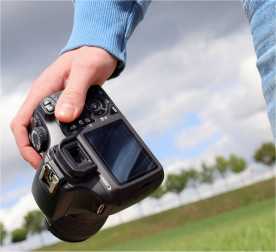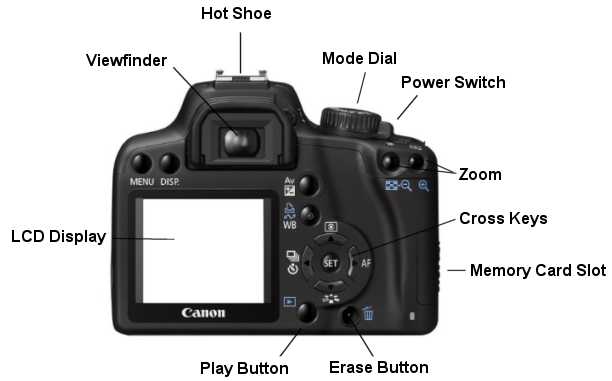|
The Feel-Good Guide to Sports, Travel, Shopping & Entertainment
|
| Main | Sports Events | Holidays & Observances | Pop Culture | Shopping | Travel |
|
There's memory, megapixels, and zoom lenses. There's shockproof and waterproof, kid friendly digital cameras, professional SLRs, and the common everday digital camera everybody else uses. Most importantly, consideration should always be given to the first question that most consumers ask. That is, how do I know I'm getting the best digital camera for the money? In order to answer that one, it's best to know a little more about what you're looking at before plunking down your hard-earned cash. In short, make sure the camera you're buying is going to do the job you want it to do. Fortunately, shopping for a digital camera isn't rocket science. Today, a majority of digital cameras offer all the 'bells and whistles' you'd expect in a fully-automatic, compact models we've all come to know and love. That said, there are three basic features to keep an eye on before purchasing that brand new digital camera - resolution, lens aperture, and zoom. Compared to old-fashioned film cameras, digital cameras obviously produce computer images. These images are made up of pixels, or tiny dots that make up the picture (briefly stare into your digital TV to see a vivid illustration). Most manufacturers will tell you that the more pixels a camera can process, the clearer and more detailed the resolution the picture will be. However, unless you're a professional photographer or billboard manufacturer, it's best not to believe the hype about those $1,000 super duper megapixel cameras that promise the best quality. Today, most digital cameras are at minimum 6 megapixel, which is fine for most prints or online photo galleries. In fact, a more critical consideration when buying a digital camera, it turns out, is lens aperture, or how much light is allowed into the lens.
• Lens aperture is the digital equivalent of the human iris, which expands and contracts as it responds to light. The larger the aperture, the better ability for capturing light. The most obvious advantage is that a larger aperture will perform better indoors or in other low-light environments. Also, look for a camera which will give you a larger spectrum from maximum to minimum aperture, since both are important. In addition to allowing more light, a larger maximum aperture also allows for a faster shutter speed (to freeze the action) as well as better control over depth of field. A minimum shutter speed allows for the exact opposite, or in those shots where you want to blur the action to dramatic effect such as city lights or racing marathons. Just make sure you know the difference between digital zoom and optical zoom before you make your next purchase. Ignore any claims of digital zoom (a method by which digital cameras simply zoom in on a standard photo with badly pixelated results) and concentrate on optical zoom, which actually telescopes into the image for the crisp shot you want. For most users, ultracompact digital cameras with a 3X zoom lens are more than sufficient and easier to carry in your pocket while traveling. For better quality zoom, jump to 10X - 12X or higher, but make sure it also features image stabilization. Otherwise - unless you want to lug a tripod with you everywhere you go - you might find your digital zoom producing very blurry results. For top shelf quality, go for the most expensive SLR digital camera featuring interchangeable lenses, and zoom away to your heart's content.. Note that it will cost you - anywhere from $700 to thousands of dollars PLUS the cost of the lenses - compared to the average price of $200-$300 for a standard model.
Usually the best time to buy digital cameras is when manufacturers release new models in February and March each year. If you can forego a few improvements on new releases, you'll be saving big as last year's digital camera stock is priced to move in late winter. Throughout the rest of the year, also look to Amazon and online retail stores for great deals and clearance sales.
Now that you've got the basics down, it may be time to go Internet window shopping. Just up ahead, these sites will help walk you through the entire process ... with direct comparisons of prices on popular names, related reviews and buying guides, along with where to find great deals on new & used digital, video, and even 35mm cameras...
PC Magazine - Digital Cameras - Editor reviews of the best, most affordable cameras on the market including links to preferred online stores, with an extensive database searchable by brand, price, megapixels, memory format. How to Buy a Digital Camera - A Nine Step Guide - Check out the basics for not getting burned, including comparisons between DSLR and point-and-shoot |
 What do you look for in a digital camera?
What do you look for in a digital camera? 

